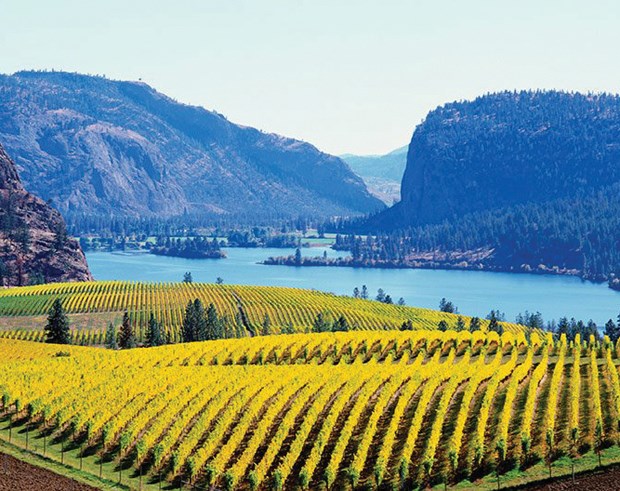The Viking explorer, Leif Ericson was the first European to discover vines and grapes in Vinland, now Newfoundland, around 1000 CE. But it wasn’t until 1866 that the first Canadian winery was built on Pele Island, the southern-most location of Ontario.
Gradually, wineries were established on Lake Erie’s northern shore and on the Niagara Peninsula. With latitude matching Bordeaux France and northern California, Niagara has Canada’s warmest climate and largest concentration of wineries in Canada.
Here in our province, Father Pandosy, a Catholic missionary was the first to realize the potential for grape growing east of Kelowna for the sacramental wine of the Church.
But B.C.’s first commercial winery, Growers, wasn’t founded until 1923 and produced sweet port-like wine made from loganberries rather than grapes. By the next decade Calona Wines was making apple wine but eventually switched to grape wine because of its better flavour.
Most of the early wines were produced from the native Labrusca grapes like Concord, which tastes musky; its great for grape jelly but lousy for quality table wine!
By the 1960’s the growers were encouraged to improve the quality of the grapes by planting French Hybrids. These could survive the cold winters of the Okanagan but didn’t have the same quality as European Viniferas such as Merlot or Chardonnay.
The new trend was to use hybrids to create sparkling wines such as Cold Duck and Crackling Rose. This way, new customers who enjoyed soft drinks and beer would be attracted to the tasty, low alcohol, sweet fizzy wines.
In the late 1970s Walter Gehringer, winemaker of Andres Wines invited German expert Helmut Becker to assess the Okanagan’s potential for making first class wines. Becker recommended planting many of the white grapes that were planted in Germany, such as Riesling and Gewurztraminer.
With this improvement, the B.C. government encouraged the establishment of small estate wineries in the late 70’s and 80’s, which had to use only B.C. grapes. The move was to make quality wines in small quantities rather than lots of mediocre wines from inferior grapes. Wineries such as Sumac Ridge under Harry McWaters and Gray Monk Cellars with the Heiss family were soon making very good wines.
Another move forward was the introduction of Icewine, first pioneered in Germany and here in Canada in Ontario. B.C.’s first Icewine was made at the Hainle Vineyards in 1974. With the advent of free trade in the 1990’s, grape growers pulled out most of the inferior grapes and switched to the premium Viniferas such as Merlot and Riesling.
The creation of the Vintner’s Quality Alliance, similar to the AOC utilized in France, allowed consumers to pick good B.C. wine with confidence.
If you want to taste the history of B.C. wines, first take some Concord grape juice, add sugar and vodka, and voila, you have what the first commercial wines made of native grapes tasted like. For a better taste, try the Quail’s Gate Marechal Foch, which is probably the best French hybrid grape that was used for B.C. wines until the 1990’s.
Finally, here are a few excellent VQA Vinifera wines to try as you celebrate Canada’s 147th birthday. For a sparkling wine, pop the cork on Sumac Ridge’s Stellar Jay ($25). If you are in a white mood, enjoy Gray Monk’s Gewurztraminer ($17) or Mission Hill’s Five Vineyard Chardonnay ($15). For red lovers, there is Calona’s Pinot Noir ($16), Mt. Boucherie’s Gamay Noir ($16) and Jackson Trigg’s Merlot ($15). For dessert, there is Inniskillin Okanagan Riesling Icewine ($35). Happy Canada Day!
Eric Hanson is a local retired teacher and wine educator.



